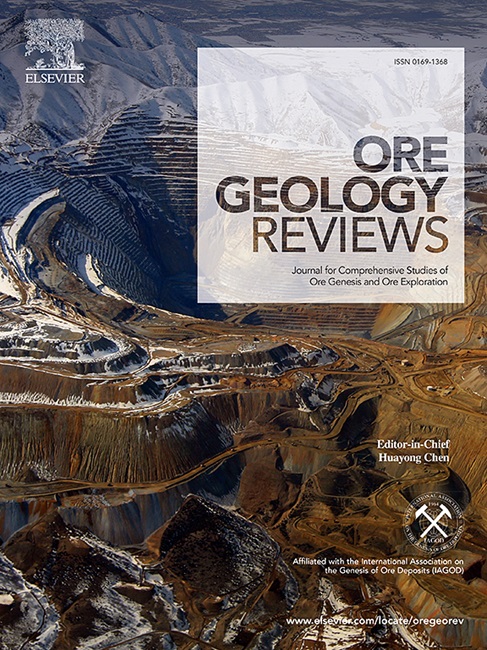Late Jurassic gold mineralization in the North China Craton’s Western belt: S-Pb-H-O isotopic and apatite U-Pb geochronology insights from the Luyuangou gold deposit
IF 3.2
2区 地球科学
Q1 GEOLOGY
引用次数: 0
Abstract
The North China Craton (NCC) is known for its abundant gold deposits, which occur across two gold metallogenic belts: the western and eastern belts, both trending NNE. Unlike the eastern metallogenic belt, which experienced short-timing early Cretaceous gold mineralization, the western metallogenic belt predominantly features late Jurassic mineralization. However, gold deposits from the late Jurassic are predominantly found in the northern part of the western belt, with fewer occurrences in the southern segment, specifically in the Xiaoqinling-Xiong’ershan gold region. This discrepancy has led to limited research on the late Jurassic gold mineralization in the southern segment, with ongoing debate regarding its occurrence. The Luyuangou gold deposit is a key example in the Xiong’ershan gold district (XESGD), which has long been regarded as a product of early Cretaceous activity due to previous dating accuracy and limitations, thereby limiting the comprehension of its genesis and hindering prospecting endeavors. This paper introduces new geochronological and isotopic (S-Pb-H-O) data for the Luyuangou gold deposit. U-Pb dating of hydrothermal apatite associated with gold-bearing pyrite constrains the mineralization timing to 157.1 ± 6.6 Ma, which fits the Late Jurassic gold mineralization event. The S-Pb-H-O isotope data suggest that the ore-forming materials originated from both the crust and mantle, with ore-forming fluids derived from magmatic and meteoric waters. Collectively, the findings of our study support that the Luyuangou deposit formed in an extensional tectonic environment during Jurassic magmatic activity, which has implications for future prospecting directions in the XESGD.

求助全文
约1分钟内获得全文
求助全文
来源期刊

Ore Geology Reviews
地学-地质学
CiteScore
6.50
自引率
27.30%
发文量
546
审稿时长
22.9 weeks
期刊介绍:
Ore Geology Reviews aims to familiarize all earth scientists with recent advances in a number of interconnected disciplines related to the study of, and search for, ore deposits. The reviews range from brief to longer contributions, but the journal preferentially publishes manuscripts that fill the niche between the commonly shorter journal articles and the comprehensive book coverages, and thus has a special appeal to many authors and readers.
 求助内容:
求助内容: 应助结果提醒方式:
应助结果提醒方式:


